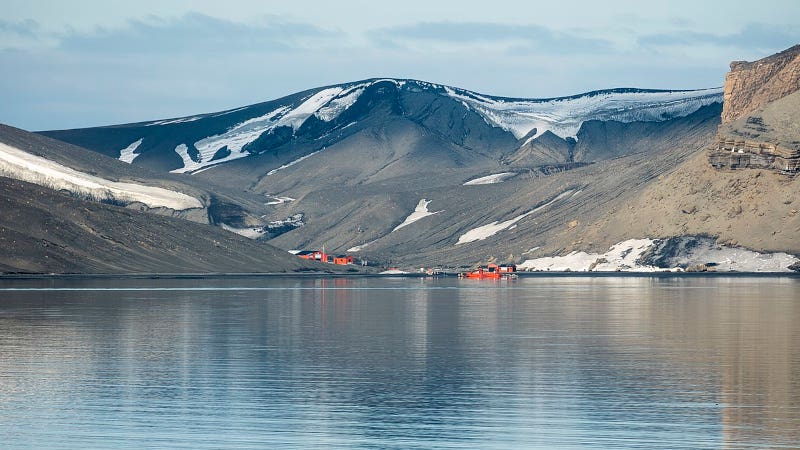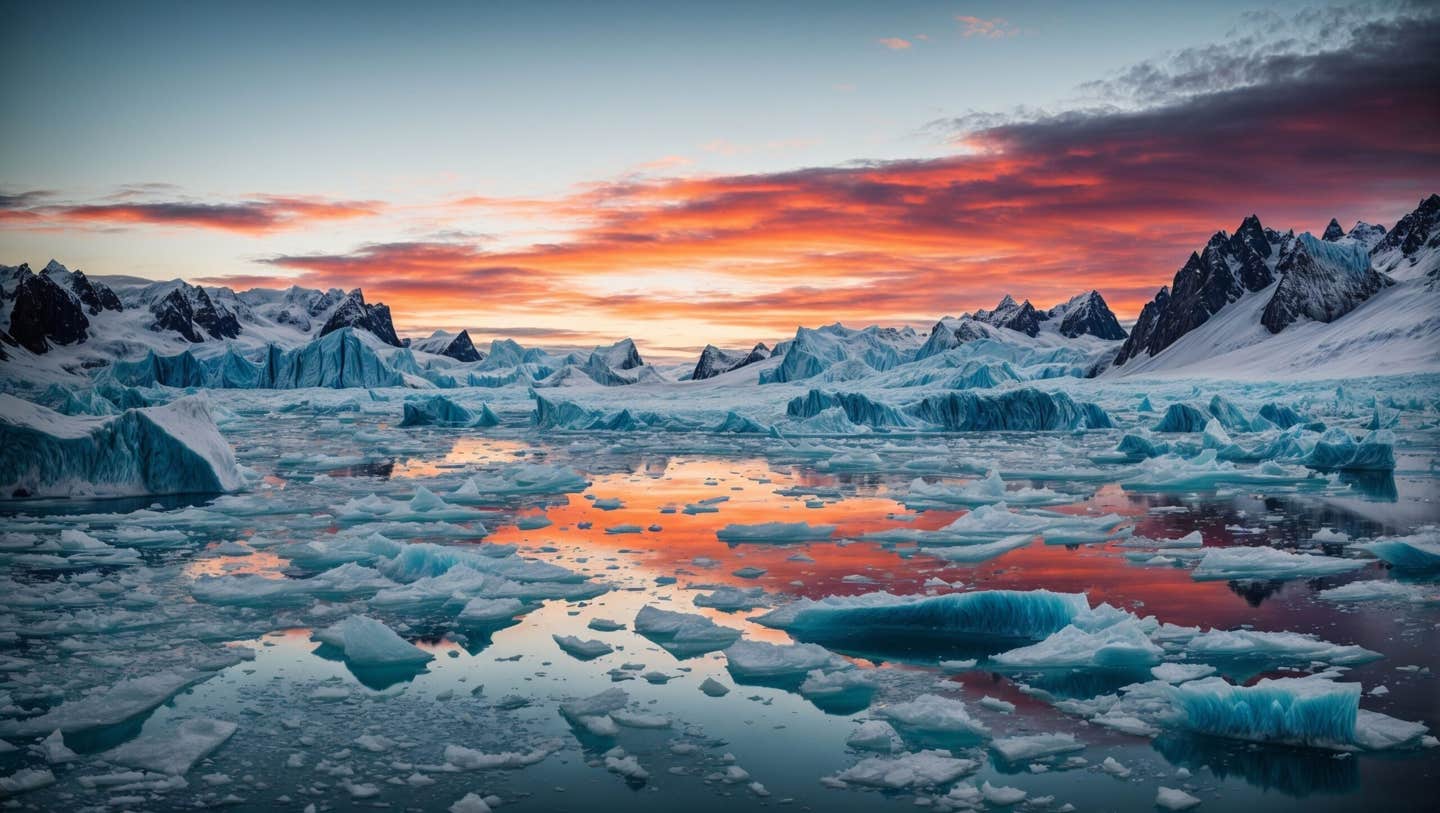Antarctic microbe has major food, cosmetic, and medical potential
A bacterium from Antarctica’s Deception Island is producing a powerful natural polymer that could revolutionize food, medicine, and sustainable materials.

Deception Island, Antarctica: a poly-extreme ecosystem, the island experiences very high or very low temperatures, pH changes, and intense ultraviolet radiation. (CREDIT: Andrew Shiva/Wikimedia Commons)
In one of Earth's driest, most harsh environments, scientists uncovered a micro-miracle. Down in Fumarole Bay on Deception Island, Antarctica, scientists discovered Bacillus licheniformis strain F2LB—a bacterium that makes an incredible sugar polymer known as an exopolysaccharide, or EPS. This remarkable compound may transform how industries produce food, cosmetics, pharmaceuticals, and biodegradable products.
The research, led by Aparna Banerjee and her international collaborators from Chile, Brazil, and India, was recently published in the International Journal of Biological Macromolecules. The project was also funded by Brazil's University of São Paulo and the Chilean Antarctic Institute with the assistance of funding support from FAPESP's Food Research Center (FoRC).
Deception Island, a volcanic caldera surrounded by Antarctic ice, may be dead to the unaided eye. But its geothermal hotspots create islands of heat and nutrient-rich soil, making up what scientists call a "poly-extreme" environment—extreme in temperature, acidity, and ultraviolet radiation. Survival for microbe like Bacillus licheniformis here is a matter of evolutionary cleverness.
Microbes Built for Survival
When researchers ventured out to collect samples of soil and fumarolic water, or hot water from volcanic outlets, they found microorganisms thriving in conditions where temperatures exceed 100°C in frigid environments. Genomic analysis of strain F2LB showed that there are genes found in ultraviolet resistance and thermoadaptation. These traits, developed over millions of generations, allow the bacterium to produce exopolysaccharides as a thermal, radiative, and dehydration barrier.
João Paulo Fabi, a university professor at the University of São Paulo and co-author of the research, stated that the molecular structure and function of the Antarctic strain surpassed commercial polymers like xanthan gum.
"It offers antioxidant protection, extended shelf life, emulsion stability, and texture improvement, particularly in functional foods," Fabi explained. "Its heat stability and resistance to extreme pH levels also render it applicable in cosmetics, pharmaceuticals, and biodegradable products."
A Deeper Inspection of the Molecule
After isolating the bacterium, the scientists used advanced machinery—Fourier-transform infrared spectroscopy, nuclear magnetic resonance, and gas chromatography–mass spectrometry—to unlock the secret of the EPS structure. The polymer was discovered to contain mostly glucose and galactose in a typical pattern that enables it to be flexible, resistant, and gellable.
Seen under the microscope, the EPS had a net-like, porous texture that would absorb water, bind metal, and form biofilms. It is these properties that make it especially coveted for real-world uses—from holding the texture of food in place to decontaminating dirty water.
In experimentation, the polymer was found to be stable over a wide pH range and resistant to high temperatures, not losing its structure even when it went beyond 250°C. It also showed considerable emulsifying property, which allowed oil and water to mix smoothly—a very important feature for food, skincare, and drug use.
Power in Performance
The group didn't stop there. They tested the EPS for antioxidant, antimicrobial, and emulsifying activity—and the results were impressive. It scavenged over 60% of free radicals, which is comparable to some commercial antioxidants. In contrast to pathogenic bacteria like Staphylococcus aureus, it was very effective against them through membrane destruction or inhibition of bacterial metabolism.
Even more impressive, the EPS was found to trap toxic heavy metals such as cadmium and lead from water samples, a sign that it could be used in bioremediation—the elimination of pollutants from toxic environments using natural organisms.
This flexibility is a major advantage for the Antarctic polymer compared to synthetic ones. It's renewable, biodegradable, and eco-friendly, all in keeping with the growing trend towards sustainable production.
Evolution in the Extreme
In the cruel climate of Deception Island, survival is founded on ingenuity. Microorganisms in the island have evolved biochemical solutions that not only sustain life but could also be advantageous for humans. Exopolysaccharides like those of Bacillus licheniformis are employed as microscopic armor to protect cells from toxins, radiation, and temperature stresses while regulating internal humidity.
Scientists believe the molecules evolved as a defense mechanism, but their therapeutic and commercial value is only just being unlocked. The F2LB strain's unique EPS showcases how nature's most extreme laboratories—Antarctica's ice volcanoes—can yield answers that today's technology has yet to be able to keep up with.
From the Lab to Real-World Applications
To test scalability stress, Banerjee's group cultured the bacterium under fermentation conditions scaled up. Initial harvests yielded a respectable three grams of EPS per liter and could be increased further with process optimization. The material's flow properties—how it tends to thin upon stirring—make it especially suitable for applications in coatings, paints, and food thickeners, where smooth texture is essential.
As companies worldwide shift away from petroleum-based products, natural polymers like this could lead the way toward more environmentally friendly alternatives. Antarctic EPS combines strength, biodegradability, and functionality in a package that few synthesized materials match.
A Global Effort for Polar Innovation
The discovery was made possible through collaboration between Chilean, Brazilian, and Indian institutions, which brings out the strength of science as a crossborder effort. Banerjee described Antarctica as a "living laboratory" where microorganisms thrive and could possibly hold the keys to such problems in health, sustainability, and materials science.
Protecting this fragile environment, scientists add, is just as crucial as its discovery. Each new microbe that is found adds to human understanding of how life adapts and thrives—and might hold hints of technologies yet unimaginable.
Practical Significance of the Findings
The finding of Bacillus licheniformis F2LB and its endurance exopolysaccharide portends a sustainable future for many industries.
Its intrinsic stability, biodegradability, and antioxidant activity make it a candidate to replace synthetic polymers in food products, cosmetics, and drugs. Its ability to chelate heavy metals also presents an eco-friendly path towards rehabilitating the environment.
As research further evolves, bioengineers can potentially engineer its molecules to render it more efficient, paving the way for greener production processes and safer products for consumers.
Research findings are available online in the International Journal of Biological Macromolecules.
Related Stories
- Buried under 2 kilometers of Antarctic ice, scientists find a 34-million-year-old lost world
- Antarctica’s buried landscape may be slowing climate change, study finds
- Startup uses microorganisms to create 'green' zero-carbon cement
Like these kind of feel good stories? Get The Brighter Side of News' newsletter.
Rebecca Shavit
Science & Technology Journalist | Innovation Storyteller
Based in Los Angeles, Rebecca Shavit is a dedicated science and technology journalist who writes for The Brighter Side of News, an online publication committed to highlighting positive and transformative stories from around the world. With a passion for uncovering groundbreaking discoveries and innovations, she brings to light the scientific advancements shaping a better future. Her reporting spans a wide range of topics, from cutting-edge medical breakthroughs and artificial intelligence to green technology and space exploration. With a keen ability to translate complex concepts into engaging and accessible stories, she makes science and innovation relatable to a broad audience.



